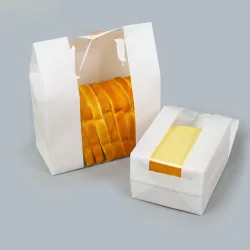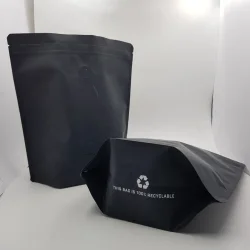Embracing Eco-Friendly Food Containers and Packaging in the Philippines
As the global demand for sustainability continues to grow, the Philippines is stepping up in adopting eco-friendly food containers and packaging solutions. From bustling eateries in Manila to frozen food suppliers in Cebu and neighborhood sari-sari stores, businesses across the country are realizing the importance of switching to eco-friendly packaging. Not only does this shift support environmental preservation, but it also aligns with consumer values and government initiatives promoting sustainable practices.
In this blog, we explore the benefits and types of eco-friendly packaging for businesses in the Philippines, including solutions for takeaway meals, frozen food, and grocery items. Benefits of eco-packaging for frozen businesses are also explored in this blog.
Why Eco-Friendly Food Containers Matter
Traditional plastic containers and single-use packaging contribute heavily to environmental degradation. The Philippines has long battled plastic pollution, ranking among the top plastic polluters globally due to single-use plastics ending up in rivers and oceans.
By switching to eco-friendly food containers, businesses in the Philippines can:
- Reduce landfill waste
- Lower carbon footprint
- Support marine life conservation
- Improve brand image and consumer trust
Whether you're a restaurant owner, frozen food supplier, or grocery retailer, investing in sustainable packaging is a step toward a greener and more responsible future.
Types of Eco-Friendly Packaging for Businesses in the Philippines
Businesses across the country have access to a growing number of eco-friendly packaging options, made from renewable, compostable, or biodegradable materials.
1. Eco-Friendly Takeaway Packaging
With the rise of food delivery apps like GrabFood and Foodpanda, takeaway meals have become a daily norm. However, this convenience often results in an increase in plastic waste.
To counter this, Filipino food businesses can opt for:
- Sugarcane Bagasse Containers: Made from sugarcane pulp, these are biodegradable and microwave-safe.
- Cornstarch Utensils: Compostable spoons, forks, and knives made from cornstarch are both durable and earth-friendly.
- Paper Food Wraps and Boxes: Great for burgers, rice meals, and snacks, these packaging options are recyclable and customizable.
- PLA-coated Cups and Lids: Ideal for beverages, these look like plastic but are made from plant-based polymers.
Small eateries and large fast-food chains alike are increasingly turning to eco-friendly takeaway packaging to meet consumer demand for sustainable choices.
2. Eco-Packaging for Frozen Food Businesses
The frozen food sector in the Philippines is rapidly expanding, especially post-pandemic as families seek convenient meal options. Traditionally, frozen goods have relied on plastic packaging, which poses environmental hazards.
Some sustainable alternatives include:
- Compostable Vacuum-Seal Bags: Suitable for meats, vegetables, and pre-cooked meals.
- Recyclable Aluminum Trays: Durable and freezer-safe, these are great for lasagnas, baked dishes, and frozen desserts.
- Paper-based Insulated Boxes: Ideal for delivery, these keep items frozen and reduce reliance on plastic coolers.
By integrating eco-packaging for frozen food businesses, companies can appeal to environmentally conscious consumers while minimizing their ecological footprint.
3. Environmentally Friendly Grocery Bags
Plastic grocery bags remain a widespread issue in wet markets and supermarkets across the Philippines. With bans in cities like Quezon City, Makati, and others, the need for environmentally friendly grocery bags has never been more urgent.
Sustainable grocery bag options include:
- Katsa (Muslin Cloth) Bags: Reusable, washable, and made locally.
- Non-woven Eco Bags: Commonly used in retail, these are affordable and customizable.
- Biodegradable Plastic Bags: These break down faster than traditional plastic, though proper disposal methods are essential.
- Upcycled Tote Bags: Made from recycled materials, they support both the environment and local artisans.
Retailers and supermarkets are now encouraging customers to bring their own bags or purchase reusable alternatives at checkout counters.
Benefits of Eco-Friendly Packaging for Filipino Businesses
Apart from environmental protection, businesses that embrace eco-friendly packaging enjoy several advantages:
Enhanced Brand Reputation
Consumers in the Philippines, especially Gen Z and millennials, are actively supporting brands that reflect their values. Using eco-friendly food containers signals responsibility and attracts loyal customers.
Compliance with Local Laws
Many local government units (LGUs) have already implemented ordinances restricting or banning single-use plastics. Eco-friendly alternatives help businesses stay compliant and avoid penalties.
Competitive Advantage
With sustainability becoming a key differentiator, companies that invest in eco-friendly takeaway packaging or environmentally friendly grocery bags set themselves apart in the market.
Long-Term Cost Savings
Although initial costs may be slightly higher, eco-friendly solutions often lead to savings over time, especially with reusable packaging and improved brand loyalty.
How to Get Started with Eco-Friendly Packaging in the Philippines
Making the transition to sustainable packaging may seem daunting, but it can be manageable with the right approach:
1. Assess Your Current Packaging Usage
Identify which areas in your business (takeaway, storage, delivery, etc.) use the most non-biodegradable packaging.
2. Partner with Local Suppliers
There are several eco-packaging suppliers in the Philippines offering wholesale rates for compostable and biodegradable containers. Some notable providers include Greenpak, EcoNest, and EcoVision.
3. Educate Your Customers
Let your customers know why you’re switching to eco-friendly packaging. Include eco-labels, social media posts, or website updates to communicate your brand values.
4. Start Small, Then Expand
You can begin by replacing high-volume items like grocery bags or takeaway containers, then gradually shift to fully sustainable packaging.
The Future of Eco-Packaging in the Philippines
The shift toward eco-friendly packaging for businesses is not just a passing trend—it’s the future. As environmental awareness grows and government policies become stricter, companies that adapt early will be better positioned to thrive.
Startups, SMEs, and even traditional markets in the Philippines are finding creative ways to reduce their ecological impact. Whether it’s using eco-packaging for frozen food businesses or introducing environmentally friendly grocery bags, these steps contribute to a larger movement that benefits both the planet and people.
Final Thoughts
The Philippines is at a crucial crossroads between modern convenience and environmental responsibility. By adopting eco-friendly food containers, resealable plastic bag alternatives, bread bags, and other sustainable solutions, Filipino businesses can be leaders in the green revolution.
Now is the time to act. Whether you're a small eatery in Davao, a supermarket in Manila, or a frozen food brand in Iloilo, the opportunity to make a positive impact starts with the packaging you choose.















